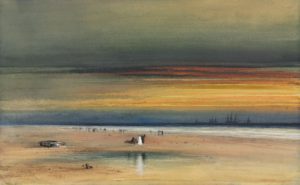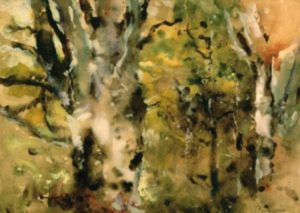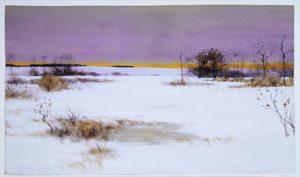A change, they say, is as good as a rest, so on the morning after I filed my last Wall Street Journal drama column of the 2016-17 season, I hopped on a train and headed for Philadephia to take a long-deferred look at American Watercolor in the Age of Homer and Sargent, an exhibition of 175 watercolors on display at the Philadelphia Museum of Art through May 14.
 This show has been widely and enthusiastically reviewed, with good reason—it’s the most ambitious exhibition of its kind ever to be mounted—and this smart review, published by Barrymore Laurence Scherer in my own Wall Street Journal, conveys much of what I thought about it.
This show has been widely and enthusiastically reviewed, with good reason—it’s the most ambitious exhibition of its kind ever to be mounted—and this smart review, published by Barrymore Laurence Scherer in my own Wall Street Journal, conveys much of what I thought about it.
I do, however, want to make two additional observations:
• It’s long seemed to me—as it does, I gather, to Kathleen A. Foster, the organizer of the exhibition—that one of the most crucially important aspects of the emergence of American watercolor painting was that it opened the door to a looser, freer style of execution which led directly to the emergence of a specifically American mode of modernism.
Many, perhaps most American artists of the pre-impressionist era were inclined to a tightness of handling that bespoke a certain emotional inhibition. Watercolor doesn’t lend itself to that kind of inhibition: it enforces an improvisational approach. To look in chronological sequence at the works by Winslow Homer and John Singer Sargent on display in Philadelphia is to watch both men coming to life, not only visually but (so to speak) spiritually as well.
 • What struck me most forcibly about “American Watercolor in the Age of Homer and Sargent” was the large number of first-class watercolors by artists whose names were unfamiliar to me.
• What struck me most forcibly about “American Watercolor in the Age of Homer and Sargent” was the large number of first-class watercolors by artists whose names were unfamiliar to me.
It goes without saying that I’ve seen a lot of Homer and Sargent, and I’m also closely familiar with the work of, among others, Childe Hassam (who is well represented in the Teachout Museum) and Maurice Prendergast, both of whom figure prominently in the show. But outside of the big names, my favorite watercolors on display in Philadelphia, all of which are reproduced here, were James Hamilton’s Turneresque Beach Scene at Sunset, J. Frank Currier’s arrestingly proto-modern “White Beeches,” and Bruce Crane’s Snow Scene, the last of which is on loan from the Metropolitan Museum, though I’ve never seen it on view there. All three of these artists were new to me, and I intend to learn much more about them.
 “American Watercolor in the Age of Homer and Sargent” isn’t a perfect show, not least because it stops a bit too soon. The great American watercolorists of the first part of the twentieth century, John Marin and Charles Demuth in particular, are hastily fobbed off as afterthoughts rather than being presented as the culmination of a major line of artistic development. Nevertheless, this is an immensely important and satisfying exhibition, and since it won’t be traveling beyond Philadelphia, you should make every possible effort to see it while you can.
“American Watercolor in the Age of Homer and Sargent” isn’t a perfect show, not least because it stops a bit too soon. The great American watercolorists of the first part of the twentieth century, John Marin and Charles Demuth in particular, are hastily fobbed off as afterthoughts rather than being presented as the culmination of a major line of artistic development. Nevertheless, this is an immensely important and satisfying exhibition, and since it won’t be traveling beyond Philadelphia, you should make every possible effort to see it while you can.
